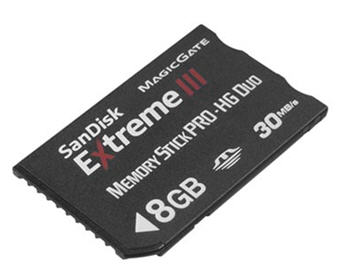SanDisk With 90MB/sec microSD Card
SanDisk Launches Extreme Pro microSDHC UHS-I Cards With 90MB/s Write Speeds
SanDisk is launching two new microSD memory cards today, officially called the SanDisk Extreme Pro microSDHC UHS-I cards. What makes them special? They allow you to capture photos and videos at up to 90 megabytes per second, which is incredibly fast for any application. As for read speeds, they’re slightly faster at 95 MB/s. That’s nowhere near maxing out a USB 3.0 connection (625 MB/s), but still an impressive figure for microSD media.
The 8GB version will retail for $60, while the 16GB model is priced at $100. Both will be available in stores soon, and for those who can’t wait, they can be purchased directly from SanDisk’s website today.

With write speeds reaching 90MB/s and read speeds at 95MB/s, the SanDisk Extreme Pro microSDHC UHS-I cards set a new benchmark for performance in small-form storage.
What “UHS-I” Actually Means
UHS-I is the first generation of the Ultra High Speed bus used by SD and microSD media. On paper it supports bus speeds up to 104 MB/s (SDR104). That’s the ceiling for the interface itself; real-world read/write numbers depend on the card’s controller, NAND quality, and the host device’s slot. In practice, a 90 MB/s write / 95 MB/s read Extreme Pro microSDHC UHS-I card sits near the top of what UHS-I can deliver, which is why these cards feel snappy for continuous photo bursts and high-bitrate 1080p/4K recording—provided your camera or phone can keep up.
Speed logos matter: “UHS-I” (the Roman numeral “I”) is the bus type; “U1” or “U3” indicate minimum sustained write speeds (10 MB/s or 30 MB/s, respectively); and “V30/V60/V90” video classes target continuous capture needs. When in doubt, match the card’s bus and speed class to the device manufacturer’s recommendations rather than chasing the highest spec on the shelf.
Where These Cards Shine
Cards at this performance tier are a strong fit for mirrorless cameras shooting 1080p/4K, action cams, drones, and gaming handhelds that benefit from fast level loads. They’re also practical for Android devices that support adoptable storage—fast random performance keeps apps feeling responsive. If your workflow includes frequent file offloads, pair the card with a UHS-I reader on a USB 3.x port to avoid a host-side bottleneck.
About SanDisk (and Today’s Ownership)
SanDisk has been one of the foundational brands in flash storage since the late 1980s, building everything from memory cards to SSDs and professional media. In 2016, SanDisk became part of Western Digital, which combined its HDD expertise with SanDisk’s flash technology. The brand you see on retail shelves is SanDisk; the public company behind it is Western Digital.
Stock Snapshot (for context)
As of September 22, 2025, Western Digital’s ticker is NASDAQ: WDC. The latest quoted price during today’s session is $112.41. Prices move throughout the day, so treat this as a point-in-time snapshot rather than investment advice.

 Lets start the clock ticking for when microSD media will take over the world for flash storage.
Lets start the clock ticking for when microSD media will take over the world for flash storage.
 Yes, you read the title correct. We now have a dual processor on
Yes, you read the title correct. We now have a dual processor on 
